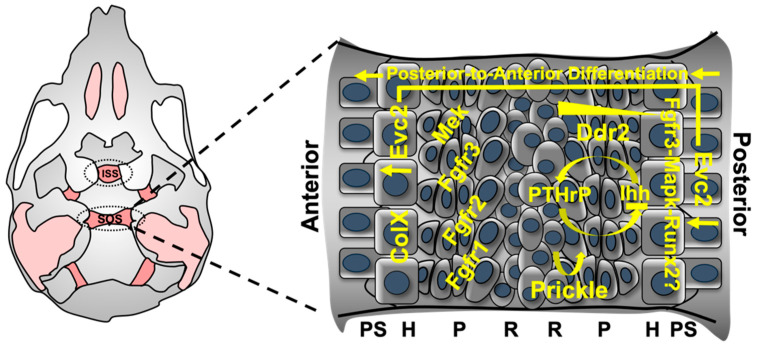Figure 2.
Molecular regulation of the postnatal cranial base synchondrosis. PTHrP-Ihh feedback regulates activity of proliferating chondrocytes until their differentiation into pre-hypertrophic cells. Prickle, a component of the Wnt/PCP pathway, directs asymmetric division of resting cells into adjacent columnar chondrocytes. Fgfr1, Fgfr2 and Fgfr3 expression in proliferating chondrocytes directly controls cranial base elongation. Activating mutations in each receptor are associated with various forms of syndromic craniosynostoses, which commonly present midfacial hypoplasia. Evc2 expression is localized in a gradient-like fashion, wherein which levels increase in the anterior most portions of the SOS and ISS are indirectly regulated through Hedgehog signaling. This relationship instructs posterior-to-anterior differentiation and eventual mineralization of cranial base chondrocytes in addition to formation of the segmented cranial base bones. Ddr2 expression is found in a gradient fashion, with highest levels localized to resting cells. Currently established in the long bone growth plate, Fgfr3-Mapk-Runx2 signaling is a critical component regulating both chondrocyte proliferation and hypertrophy. Whether this relationship exists in the cranial base synchondrosis remains to be elucidated. ISS: inter-sphenoid synchondrosis, SOS: spheno-occipital synchondrosis, R: resting zone, P: proliferating zone, H: hypertrophic zone, PS: primary spongiosa.

